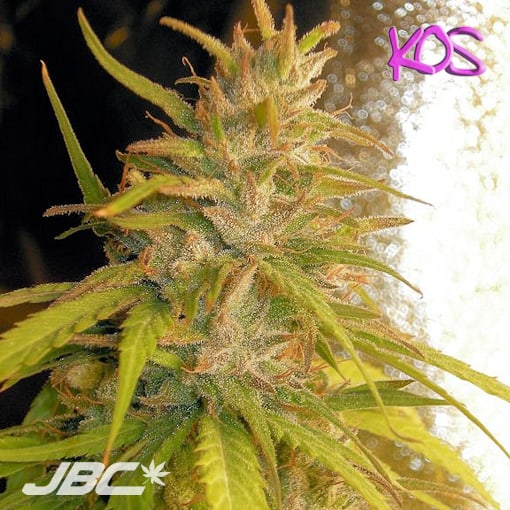Description
The Cindy Congo F2 will be totally Congo dominant, as these two blended well but the Congo walked all over the Cindy. These will go 10 to 11 weeks, and the female Cindy Congo breeder I chose also carries the purple markers from the C99 contribution. This will no doubt lead to many purple Cindy Congo F2 individuals. The yields are fine, not large, but let me tell any of you that are true sativa connoisseurs, this baybee is a must have in your collection; much like Vietnamese sativa, this Congo sativa is a stand alone as far as exotic qualities are concerned; and insane vigor.
The Cindy Congo is one of those rare sativas that is potent to the point of almost being hallucinogenic. However, to get this genetic potential from her she must be grown to full maturity, harvested dried and cured correctly, and then you will experience one of the true Jungle Queen Sativas.
MAMA: Cindy Congo F1 (African Congo Sativa x C99)
PAPA: Cindy Congo F1 (African Congo Sativa x C99)
TYPE: Sat. Dom. Hybrid (95%+)
AROMA: Fruity background with strong, dank, black hashish.
YIELD: Average
POTENCY: Extremely High
HARVEST WINDOW: 70 – 77 Days
Parental Info
MAMA: The female KOS’s own Congo that I acquired over a decade ago from my South African buddy “Tokestar” that grabbed up some seeds from a local SA farmer who had labeled the selected breeder female as “HG1” (home grown #1); and these plants when I grew them went 18 weeks, but they were psycho-potent, I mean in that real different kind of way, the kind of herb that will cut through anything else you may have smoked and intensely take over your high.
PAPA: The (paternal P1) father is my Cinderella 99 (C99) that KOS has inbred 5 times now and brought in the purple expressions to the line. C99 finishes in 8 weeks pretty much on the button and is awesome at bringing flowering times down and contributing to resin production. C99 is also almost pure-blooded sativa and extremely potent with flavors and smells that remind me of sweet overripe figs.
Additional Info
Points to Consider Growing Cindy Congo f2 Hybrid:
- I wouldn’t recommend growing this outdoors along the coast, or where any kind of morning fog or mist is a thing. She may be alright with limited exposure, but I would advise against it.
- You will need some decent sativa skills with this one indoors—no bullshit—and like any vigorous wild child sativa she can get out of control fast. Make sure you have your plant bondage skills ready for her. Topped she will turn into a crazy huge medusa.
- Outdoors she can get HUGE; so be ready for that. She excels outdoors in moderate southern latitudes.
- She’s not really fussy except when it comes to over feeding.
- Only flower clones of her in containers, it makes a crazy difference (see breeder’s notes below).
SPECIAL GROWING INSTRUCTIONS:
Please do not sprout these on a 24/0 photoperiod and KOS recommends a photoperiod of 16/8 for sprouting and until 30 days old Never use a 24/0 photoperiod. Always allow plants (or clones of plants; and clones are the same age that the seed plant would be no matter how many clones of clones) to get at least 60 days old from sprouting, before starting to flower, for maximum resin production. KOS always recommends organically growing our gear for the full appreciation of smells and flavors.
Breeder’s Note December 5, 2018: Here’s the things you should for sure do to get the most bang for your buck here with these sativa goddesses. First of all, don’t even flower seedling plants, just flower clones if growing in containers; in the earth outdoors, by all means use seedling plants. But the thing is with indoors, you need the plants to be pretty old, like at least 70 days old, from sprouting, before you initiate flowering. This will make a giant difference in your potency and flavors.
I would run her topped myself, under like a 400-watt light maybe 6 mains, under a 1000 watt maybe 10 mains; but … start her flowering a bit smaller than you would think … she grows really fast and will stretch up to 3x her original height, and she gets very wide as well when topped. Prepare to do some supporting of branches. I really like those long fuzzy pipe cleaners for this job, along with a stabilizing/support stick in the pot as well; but whatever works best for you.
Keep everything as consistent as possible, she’s not a big fan of too much food at once; she’s mostly an old landrace turned cultivar in South Africa, so she’s a huge fan of the all-natural approach of slow and steady rather than aggressive intermittently; basically, she prefers her food always available like from living soil and good water, rather than feeding with liquids or powerful teas. Finally—MAKE SURE you finish what you started—you need to let her finish all the way before harvesting, she put on her last 30% of potency in the last week before harvest, per my repeated exposure first hand growing her for many (many) years now.



